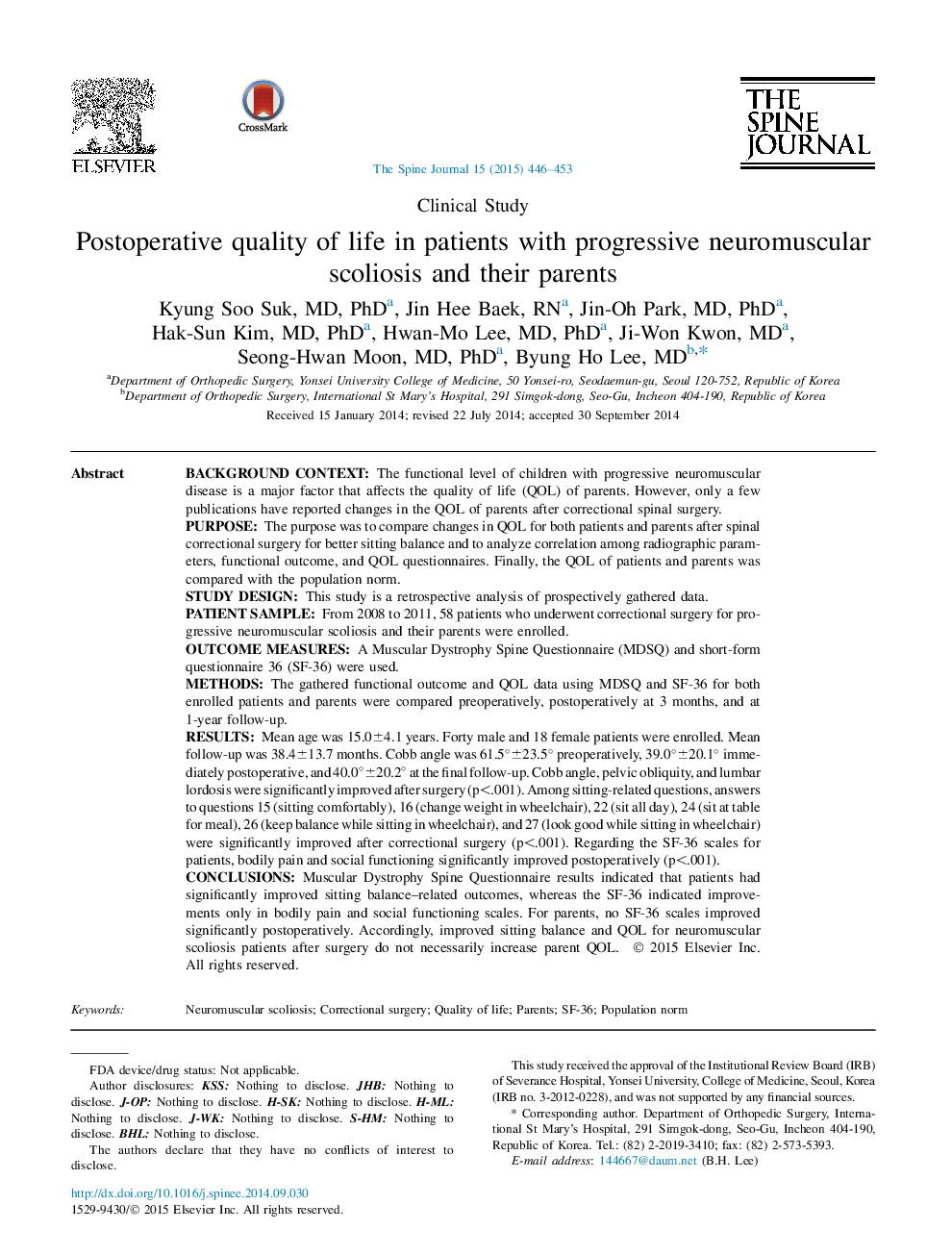| کد مقاله | کد نشریه | سال انتشار | مقاله انگلیسی | نسخه تمام متن |
|---|---|---|---|---|
| 4096712 | 1268569 | 2015 | 8 صفحه PDF | دانلود رایگان |
Background contextThe functional level of children with progressive neuromuscular disease is a major factor that affects the quality of life (QOL) of parents. However, only a few publications have reported changes in the QOL of parents after correctional spinal surgery.PurposeThe purpose was to compare changes in QOL for both patients and parents after spinal correctional surgery for better sitting balance and to analyze correlation among radiographic parameters, functional outcome, and QOL questionnaires. Finally, the QOL of patients and parents was compared with the population norm.Study designThis study is a retrospective analysis of prospectively gathered data.Patient sampleFrom 2008 to 2011, 58 patients who underwent correctional surgery for progressive neuromuscular scoliosis and their parents were enrolled.Outcome measuresA Muscular Dystrophy Spine Questionnaire (MDSQ) and short-form questionnaire 36 (SF-36) were used.MethodsThe gathered functional outcome and QOL data using MDSQ and SF-36 for both enrolled patients and parents were compared preoperatively, postoperatively at 3 months, and at 1-year follow-up.ResultsMean age was 15.0±4.1 years. Forty male and 18 female patients were enrolled. Mean follow-up was 38.4±13.7 months. Cobb angle was 61.5°±23.5° preoperatively, 39.0°±20.1° immediately postoperative, and 40.0°±20.2° at the final follow-up. Cobb angle, pelvic obliquity, and lumbar lordosis were significantly improved after surgery (p<.001). Among sitting-related questions, answers to questions 15 (sitting comfortably), 16 (change weight in wheelchair), 22 (sit all day), 24 (sit at table for meal), 26 (keep balance while sitting in wheelchair), and 27 (look good while sitting in wheelchair) were significantly improved after correctional surgery (p<.001). Regarding the SF-36 scales for patients, bodily pain and social functioning significantly improved postoperatively (p<.001).ConclusionsMuscular Dystrophy Spine Questionnaire results indicated that patients had significantly improved sitting balance–related outcomes, whereas the SF-36 indicated improvements only in bodily pain and social functioning scales. For parents, no SF-36 scales improved significantly postoperatively. Accordingly, improved sitting balance and QOL for neuromuscular scoliosis patients after surgery do not necessarily increase parent QOL.
Journal: The Spine Journal - Volume 15, Issue 3, 1 March 2015, Pages 446–453
